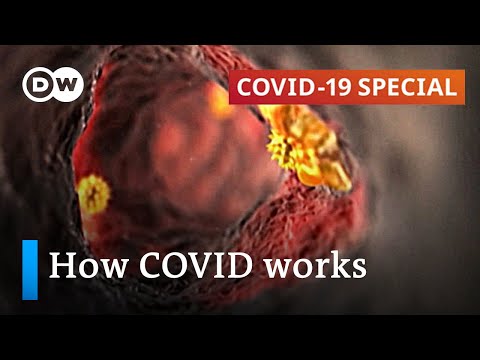What is the main route of transmission of COVID-19?
How The Brand New Coronavirus Spreads And Progresses
Choir practices, church companies, nightclubs and a party are simply few of the documented superspreader events. While bigger droplets rapidly fall, tiny, light ones can linger in the air. If you’re contaminated, those droplets can include the coronavirus, and early research suggests it can be viable for a lot of minutes to hours.
The main route of transmission of COVID-19 is through respiratory droplets generated when an infected person coughs or sneezes. Any person who is in close contact with someone who has respiratory symptoms (e.g., sneezing, coughing, etc.) is at risk of being exposed to potentially infective respiratory droplets. Droplets may also land on surfaces where the virus could remain viable for several hours to days. Transmission through contact of hands with contaminated surfaces can occur following contact with the person’s mucosa such as nose, mouth and eyes.
When attainable, have another member of your household care on your pets while you are sick. If you must care in your pet while you are sick, wash your hands before and after you work together together with your pets and put on a face masks. The virus that causes COVID-19 does appear to unfold from folks to pets, based on the FDA. Research has discovered that cats and ferrets are more likely to become infected than canine.
Q: Are There Any Vaccines Or Other Medical Merchandise Out There To Prevent Covid
There exist several believable pathways for viruses to be transmitted from person to person. Human atomization of virus-bearing particles occurs from coughing/sneezing and even from regular respiratory/speaking by an contaminated particular person (3⇓⇓–6). Virus transmission happens via direct or oblique contact and airborne routes . Large droplets readily settle out of air to trigger particular person/object contamination; in contrast, aerosols are effectively dispersed in air.

The CDC states that people who have gotten sick with COVID-19 may still benefit from getting vaccinated. For now, persons are eligible to get the COVID-19 vaccine whether or not or not they have been beforehand infected. Vaccination criteria may change in the future as scientists be taught more about pure immunity after COVID illness. There have been some confirmed cases of reinfection with COVID-19.
Monitor Your Health Every Day
Face masking prevents each airborne transmission by blocking atomization and inhalation of virus-bearing aerosols and get in touch with transmission by blocking viral shedding of droplets. On the other hand, social distancing, quarantine, and isolation, along side hand sanitizing, minimize contact transmission however don’t defend towards airborne transmission. Similarly, airborne transmission also contributes dominantly to the linear increase in the infection previous to the onset of mandated face covering in Italy and NYC (Fig. 2 B and C and SI Appendix, Fig. S1). We have elucidated the transmission pathways of coronavirus disease 2019 (COVID-19) by analyzing the trend and mitigation measures in the three epicenters.
While transmission through direct or indirect contact happens in a short vary, airborne transmission through aerosols can happen over an extended distance and time. Inhaled virus-bearing aerosols deposit directly along the human respiratory tract. To protect against infection by the brand new coronavirus, health care employees wear personal protecting gear such as robes, gloves, face shields, and N95 respirator masks when they’re in the identical room as a patient who’s in isolation. “All well being care personnel get common fittings of N95 masks to make sure that they are worn properly,” mentioned Chiu. These precautions are supposed to defend against contact, droplet and airborne transmission. The extra airborne precautions are taken within the well being care setting because some medical procedures, similar to endotracheal intubation, might trigger secretions to be aerosolized.
Currently, there is no evidence to recommend the virus that causes COVID-19 is circulating in free-living wildlife within the United States, or that wildlife could be a source of an infection for individuals in the United States. Until we know more about how this virus affects animals, CDC encourages pet house owners to deal with pets as you’d other human members of the family to protect them from potential infection. This means limiting contact between your pets and people outdoors your family as much as possible and avoiding places the place large numbers of people collect. Although we know certain bacteria and fungi could be carried on fur and hair, there isn’t any proof that viruses, together with the virus that causes COVID-19, can spread to people from the skin, fur, or hair of pets. The efficacy of these disinfection strategies against the virus that causes COVID-19 isn’t recognized.
Should I wash my hands after opening a package to avoid coronavirus disease?
Currently, there have been no cases of COVID-19 in the United States associated with imported goods.Still, to protect yourself, wash your hands after opening the package within the shipping box. Washing your hands regularly is one of the most effective ways to reduce the chances of contracting coronavirus.
Currently, there isn’t any proof to counsel contact lens wearers are extra at risk for buying COVID-19 than eyeglass wearers. In healthcare settings throughout the United States, donated blood is a lifesaving, important a part of caring for patients. The need for donated blood is constant, and blood facilities are open and in pressing need of donations.
In addition to those at elevated threat, there are certain groups of people who require additional precautions through the pandemic. Pregnant persons are additionally at elevated threat for severe sickness from COVID-19. You could take a look at unfavorable if the sample was collected early in your an infection and test constructive later throughout this sickness.